Text
I’m back, for good. I’m taking requests again, fully. Getting back into giving information to you guys. Hope to speak to you again. <3

11 notes
·
View notes
Photo
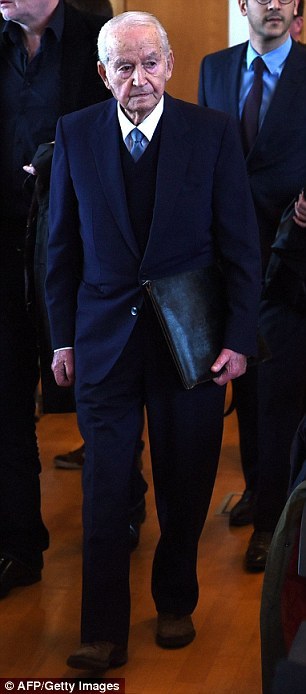
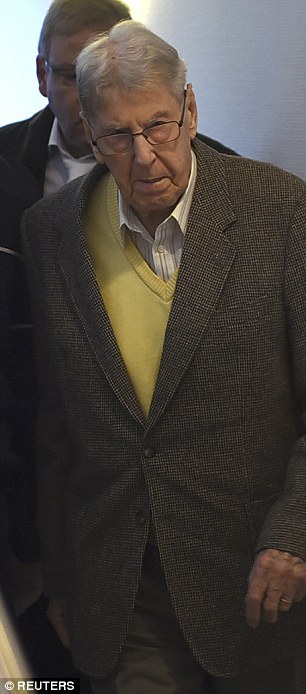
The moment Holocaust survivor comes face to face in court with Nazi death camp guard, 94, accused of helping to murder 170,000 Jews at Auschwitz.
Reinhold Hanning, 94, is accused of 170,000 counts of accessory to murder
He was SS 'sergeant' at time when hundreds of thousands were killed there
Survivor Leon Schwarzbaum looks him in eye and tells him to 'come clean'
He is among 40 survivors and relatives who will testify during the trial
A 94-year-old former Auschwitz guard came face-to-face with Holocaust survivors today when he arrived at court to stand trial for helping to murder 170,000 Jews.
Reinhold Hanning is accused of serving as an SS Sergeant between 1943 and 1944, a time when hundreds of thousands of Hungarian Jews were gassed to death at the camp.
The trial in Detmold was moved to the city's chamber of industry and commerce because there are not enough seats for media and public in the actual courthouse.
Read more: http://www.dailymail.co.uk/news/article-3442010/Arriving-face-justice-70-years-Nazi-death-camp-guard-94-goes-trial.html#ixzz3zyIlh000
12 notes
·
View notes
Photo
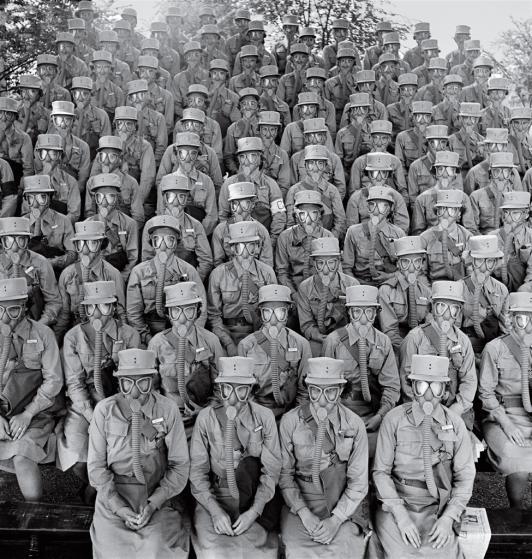
Members of the Women's Auxiliary Army Corps, commonly known as WAACs, don their first gas masks at Fort Des Moines, Iowa, in June 1942. The female troops were famously praised by General Douglas MacArthur, who called them "my best soldiers."
79 notes
·
View notes
Photo

In a picture that captures the violence and sheer destruction inherent in war perhaps more graphically than any other ever published in LIFE, Marines take cover on an Iwo Jima hillside amid the burned-out remains of banyan jungle, as a Japanese bunker is obliterated in March 1945.
72 notes
·
View notes
Photo
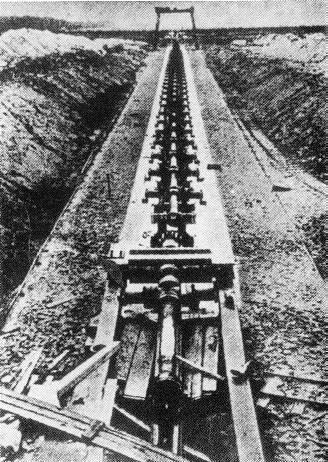
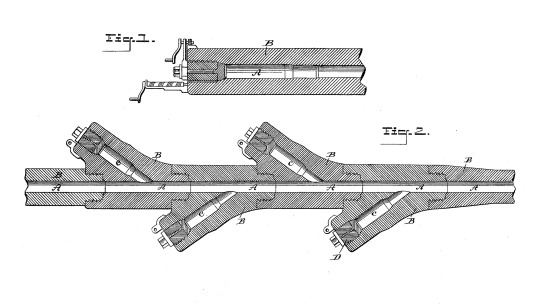
The V3 was the natural development from the V1 and V2 weapons that had terrorized London in 1944 – a weapon for revenge (‘Vergeltungswaffen’). The V3 was never fired at London though it was used in a very minor way in the Battle of the Bulge.
On July 6th, 1944, nineteen RAF Lancaster bombers from 617 Squadron (the ‘Dambusters’ Squadron) carpet-bombed a hillside on the French northern coastline between Calais and Boulogne. To all intents their target appeared to be a railway tunnel. In fact, inside the hill itself was an emplacement that would have fired the V3 if the chance had been there for it to do so – part of the firing mechanism is in the photo above.
However, the Lancasters attacked the hill with 35 tons of high explosive bombs. Their target were the concrete and steel-lined covers of the massive gun barrels that were meant to attack London with the intention of reducing the inner city to rubble. The V3 was not a rocket like to V2 nor a pilot-less plane like the V1. It was a dart-shaped shell nine feet long and the 416 feet gun barrels targeted by the Lancasters were, on paper, capable of firing 600 of these shells every hour. However, one of the ‘Tallboy’ bombs (12,000 lbs of explosives) developed by Dr Barnes Wallis penetrated one of the five gun barrel shafts and did so much damage to the ‘guts’ of the project that it was eventually abandoned.
The idea of a weapon that could destroy London was sold to Hitler by the firm Roechling – a leading German armaments and steel firm. Because it had the backing of Hitler, great sums of money and manpower was thrown into the project. Men such as Werner von Braun claimed that the money was better spent on upgrading Peenemunde but Hitler had got his mind set on the destruction of London – something the Luftwaffe had failed to do during the Blitz.
Project ‘High Pressure Pump’ was started in August 1942. The man at the head of the project was August Coenders, a machine gun engineer. He had studied captured French documents from 1918 for a multi-stage long barreled gun that was meant to be the French answer the the Germans ‘Big Bertha’ long range gun that had fired 320 eight-inch shells into Paris from the distance of 78 miles. Coenders boss, Hermann Roechling, was a personel friend of Hitler and he saw this as a chance to greatly elevate himself in the eyes of the Führer. By 1943, Albert Speer was also willing to add his name to the project.
Speer’s plan was to build 50 of these huge guns set in giant underground emplacements near the hamlet of Mimoyecques in the Pays de Calais. The guns were designed to fire one round from each barrel every five minutes which, Speer hoped, would produce a “saturation coverage” of London with a maximum of 600 shells hitting London every hour.
Ballistic experts in Nazi Germany doubted whether the plan had any reality. Lieutenant-General Erich Schneider believed in the development of the V1 and V2 but he always believed that the V3 was in the realms of fantasy. In this he was probably correct. The initial tests on the shells showed that when they were fired they had a tendency to flip over in flight as they lack stability. Therefore, from the earliest tests, London appeared to be safe. However, this did not stop Speer pushing for Hitler to continue his support the project.
The huge emplacement was built at Mimoyecques using slave labourers, POW’s and German workers. Such activity obviously attracted the attention of the French Resistance who fed intelligence back to London. 1000 artillery troops were quartered underground; the complex had its own power station that powered an air conditioning unit. Speer got it into his head that the V3 was to be the weapon that would bring Britain to its knees and vast sums of money was thrown at the project, so much so that it is said that the campaign in Russia was affected by this. It became the weapon that had overriding priority within Germany.
RAF photo reconnaissance planes also spotted a tell-tale sign – haystacks out in the autumn when all others had been brought in within the region of the Pay de Calais. These haystacks disguised the gun barrel covers of the V3 project. In November 1943, the RAF made its first attack on the complex but it made little impact.
In January 1944, the guns that were to be used on the V3 project were fired for the first time in Germany at a test range. The velocity of firing was only 1000 metres a second – 50% too weak for a shell to hit London from Mimoyecques. As important, the shells that were fired were well below the size expected for an all-out attack on London:
“The explosive charge they could carry was so small that they were quite useless against a huge target like London; what we needed was an atom warhead but Hitler would not see that.” - Lieutenant-General Erich Schneider.
However, the expert opinions of the likes of Schneider were ignored and he had to tread carefully in an era when “defeatism” was punishable by a term in a concentration camp and possible death.
Those who were concerned that the V3 was absorbing far too much money, time and manpower. They called in Professor Werner Osenberg, head of the German Wartime Scientific Research Council. He quickly realized the the ‘High Pressure Pump’ project was fraught with scientific problems that probably could not be solved. Osenberg complained that the V3 project was not based on any form of scientific thinking and he referred to it as “messing about”. Roechling complained to Hitler about such comments but this became irrelevant when in June 1944, the Allies landed in Normandy. Movement up the coast to the Pays de Calais would not take long and the project was doomed to failure.
Perhaps the most pertinent comment about the whole project came from an engineer who worked on ‘High Pressure Pump’, Anton Huber:
“The actual project itself seems not to be scientifically perfect, and its development has not been sufficiently long. The workers are wasting a lot of time on the site because there are not enough trained concrete makers.”
On July 4th 1944, Huber wrote to Osenberg that the complex had been without electricity for seven days and that nothing had been achieved. On July 8th, Huber wrote that the project had effectively been wiped out as a result of the Lancaster bombers raid. However, Hitler, still convinced that the V3 would win the war for him, ordered that the project should be moved to Germany itself and placed under the control of the SS. Hitler saw it as the secret weapon that would push back the Allies as they tried to advance to Germany.
One barrel was used with just 44 rounds in the Battle of the Bulge. The very last V3 shells fell on Luxemburg. After this, the barrel was destroyed. The final order to end the V3 project came in February 1945.
Source: http://www.historylearningsite.co.uk/world-war-two/world-war-two-in-western-europe/the-v-revenge-weapons/v3/
12 notes
·
View notes
Text
R.I.P
Rest in peace to everyone whom lost their lives to terrorist attacks or natural disasters yesterday. 13/11/2015.
#PrayFor : Paris, Lebanon, Japan, Baghdad, Mexico, China.
9 notes
·
View notes
Photo

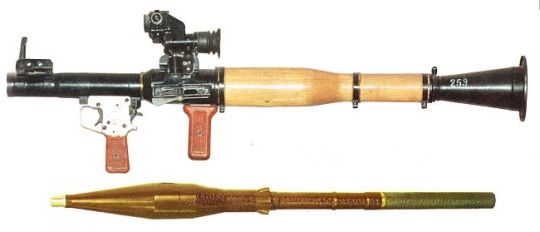
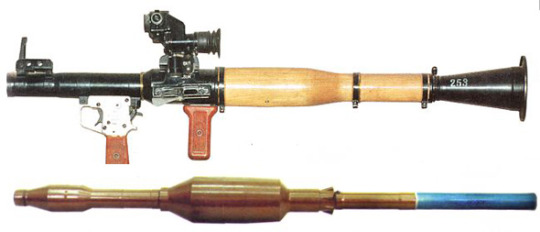
Caliber: 40 mm launcher; 40 and 70 - 105mm warheads (depending on the grenade model).
Type: recoilless launch + rocket booster.
Overall length: 650mm.
Weight: 6.3 kg unloaded, with PGO-7 telescope sight.
Effective range: 200-500 meters, depending on the grenade type.
The RPG-7 is a further development of the previous RPG-2 antitank grenadelauncher. RPG-7, in its first version, known as RPG-7V, has been adopted by Soviet army in 1961, and still is widely fielded in Russia and at least 50 more countries. By far, RPG-7 can be considered as one of the most successful antitank grenade launchers ever made. Initially thought as an anti-armor weapon, it latter has been adopted for other fire-support missions by introduction of various types of grenades, such as anti-infantry HE-FRAG, multi-purpose Thermobaric/FAE, and some other types of ammunition. The antitank grenades for RPG-7 also came a long way, from original PG-7V grenade, with penetration of about 260mm/10inches of RHA, and up to 500mm/20inches of RHAor 1.5 meters/5ft of brick wall with single-warhead PG-7VL grenade, developed in 1977. By the late 1980s, a tandem-type PG-7VR grenade has been introduced. This grenade has two warheads and is intended against the most modern tanks, fitted with ERA (Explosive Reactive Armor). Front warhead sets off the ERA, and second warhead then penetrates more than 600mm/24in of armor.
The RPG-7 is a shoulder fired, single-shot, smoothbore recoilless launcher. Grenades are loaded from the front, and the rear of the barrel is fitted with venturi nozzle. Because of the recoilless design, there is a dangerous backblast zone, more than 20 meters/60ft long. The antitank grenades are of combination type, using a charge of smokeless powder for RCL-type launch. Once grenade reaches safe distance from the shooter (about 10-20 meters), the built-in rocket booster engine ignites and further accelerates the grenade, greatly enhancing the effective range (up to 500+ meters for single warhead grenades, up to200+ meters for much heavier tandem or FAE grenades). Because of increase in range, RPG-7 is usually issued with 2.7X fixed magnification optical sight, designated PGO-7. The sight has a range-finding scale for typical targets (tanks) with height of 2.7m/9ft, and windage adjustment scales. RPG-7 also fitted with backup iron sights. RPG-7 uses mechanical ignition system with manually cocked external hammer, and a single-action trigger. Because of this, grenade must be properly aligned with the firing mechanism upon loading.
Each AT grenade consists of a large-caliber HEAT warhead with base fuze, with the 40mm diameter rocket engine behind. The rocket nozzles are located at the front of the engine, close to the warhead. The tail of the rocket is fitted with folding stabiliztator fins, which are extended when grenade leaves the barrel. The launch charge, made of black powder, is loaded into a combustible cardboard case, and attached to the rear of the grenade prior to loading into launcher. Grenades and launch charges are carried in special backpacks. By the original soviet standards, grenadier carries two rounds, and his assistant carries three more. There were several minor upgrades to the basic design of the RPG-7 in USSR and Russia, the most important being the RPG-7D, with two-part takedown barrel, which was issued to the airborne troops. Since RPG-7 was, and still is manufactured in many countries(such as Bulgaria, China, Iraq and Romania, to name a few), there are plenty of modifications in launcher, and, more important, in grenades.
RPG-7 is a simple and inexpensive weapon, yet it possess a high threat to most modern tanks, and also can serve in a number of other roles, making it a true one-man artillery.
19 notes
·
View notes
Photo
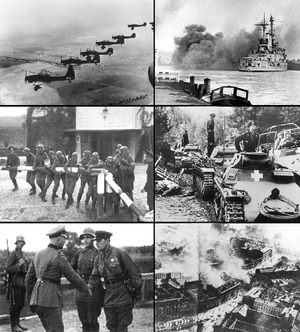
From left to right: Luftwaffe preparing to bomb Wieluń,SMS Schleswig-Holstein attacking the port of Danzig,Wehrmacht soldiers destroying the Polish-German border post, German tank and armored car formation, German and Soviet troops shaking hands following the invasion, Bombing of Warsaw.
7 notes
·
View notes
Text
Back!
I’ve missed taking requests, so send them in and I’ll be sure to present a post for you.
I’m back!
3 notes
·
View notes
Photo
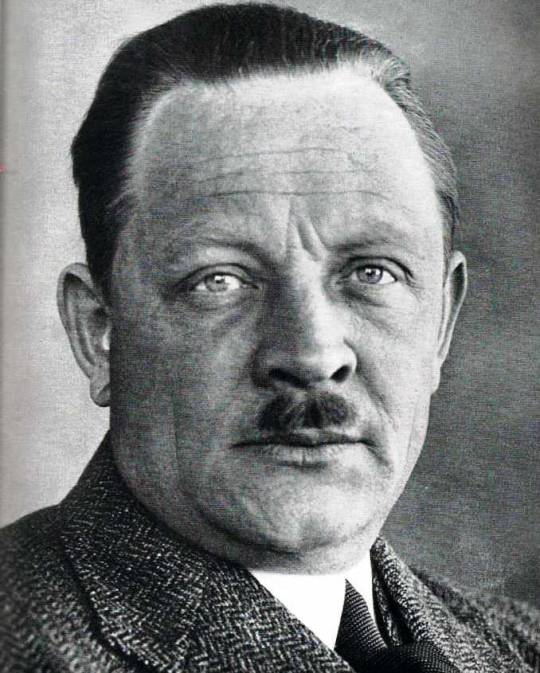

Erich Koch (19 June 1896 – 12 November 1986) was a Gauleiter of the Nazi Party (NSDAP) in East Prussia from 1928 until 1945. Between 1941 and 1945 he was the Chief of Civil Administration (Chef der Zivilverwaltung) of Bezirk Bialystok. During this period, he was also the Reichskommissar in Reichskommissariat Ukraine from 1941 until 1943. After the Second World War, Koch stood trial in Poland and was convicted in 1959 of war crimes and sentenced to death. The sentence was commuted to life imprisonment a year later. (Wikipedia)
2 notes
·
View notes
Note
Hey dude, any possibility of us getting anything on Nazi technology, such as the Horten Ho 229, Aggregat A4 (V2), Z4 Computers and V-1 Bombs? c:
I just got done with a Horten Ho 229 post and I have done V-1 bombs previously. If you go back far enough in my archive, you should be able to find it.
Hope you enjoy the page. :)
2 notes
·
View notes
Photo
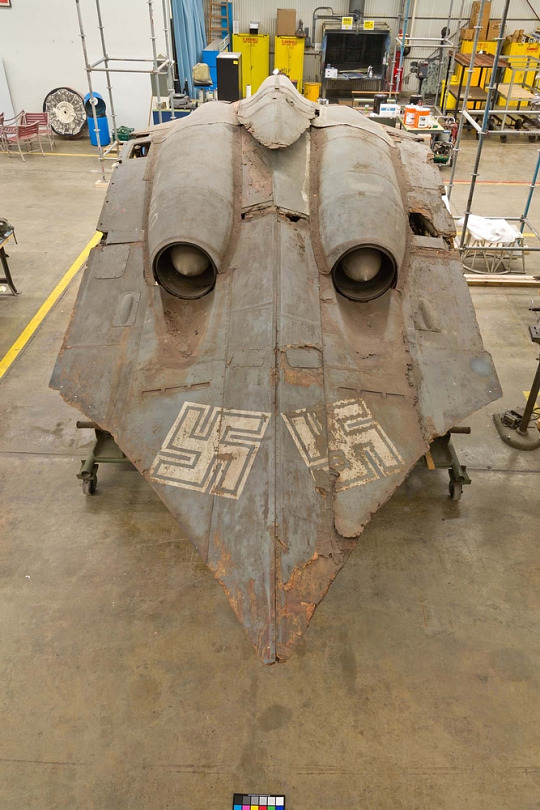


Horten Ho 229:
In 1943 the all-wing and jet-propelled Horten Ho 229 ('aitch-oh-two-two-nine') promised spectacular performance and the German air force (Luftwaffe) chief, Hermann Göring, allocated half-a-million Reich Marks to the brothers Reimar and Walter Horten to build and fly several prototypes. Numerous technical problems beset this unique design and the only powered example crashed after several test flights but the airplane remains one of the most unusual combat aircraft tested during World War II.
306 notes
·
View notes
Text
Still alive!
I have been dealing with work issues, computer issues and moving problems hence why absence.
I will be continuing posting when I’m up and running again but I hope you have been enjoying my content.
6 notes
·
View notes
Photo

Let's chat on Meow App: monsieurchouchani. Get the App here: http://meowch.at/app
6 notes
·
View notes
Text
If you wwnt to contact and have a chat with me, add me on Instagram - Kieranmws. Snapchat - Fck00f or Kik - Fck00f. :)
5 notes
·
View notes
Photo

The automobile engineer Ferdinand Porsche (in suit), Adolf Hitler and, immediately to Hitler's left, the head of the German Labour Front, Robert Ley, admire Hitler's birthday gift on his 50th birthday: a convertible Volkswagen.
#ahistoryofwar#ferdinand porsche#Adolf Hitler#robert lev#convertible#automobile#porsche#birthday#World War Two#nazi germany
62 notes
·
View notes
Photo

Liverpool remembers.
R.I.P to those whom died on September 11th 2001. Gone but not forgotten.
37 notes
·
View notes